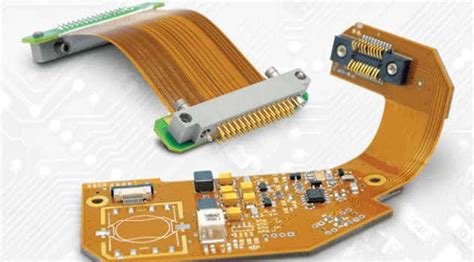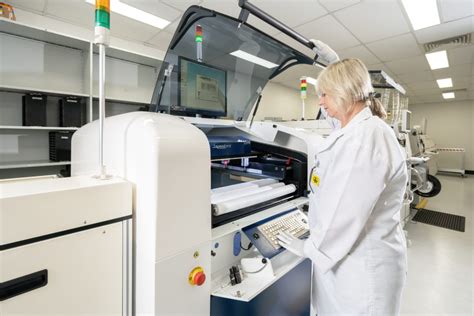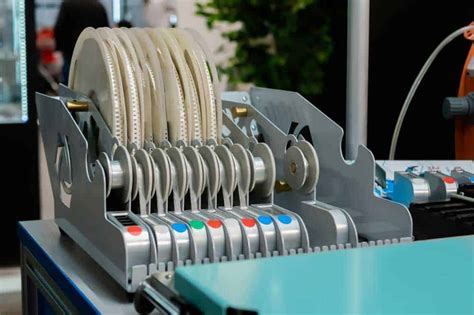Unlocking Efficiency: The Future of Consigned PCB Assembly
Key Takeaways
Consigned PCB assembly is becoming an indispensable element in the landscape of modern manufacturing, primarily due to its ability to significantly enhance efficiency and productivity. By allowing manufacturers to control their PCB assembly processes, companies can obtain superior quality while minimizing costs. One of the key benefits of consigned PCBA is its flexibility; businesses can adapt their assembly processes according to specific design requirements without needing to rely heavily on external vendors. This adaptability fosters a culture of innovation as organizations seek ways to optimize their production lines. Furthermore, using consigned PCB assembly facilitates a shorter time-to-market for electronic products, which is critical in today’s fast-paced industry. Manufacturers can seamlessly integrate advanced technologies into their workflows, leading to a noticeable decline in both production errors and lead times. Thus, understanding these core benefits provides valuable insights into why the future of PCBA lies in innovative practices that not only improve efficiency but also bolster overall quality standards in electronics manufacturing.
Understanding Consigned PCB Assembly: A Comprehensive Overview
Consigned PCB assembly, or PCBA, is an innovative and strategic approach in the electronics manufacturing landscape. This method enables companies to outsource the assembly of printed circuit boards while retaining control over the parts and components used in production. By partnering with specialized firms, manufacturers benefit from a streamlined process that optimizes both efficiency and quality.
One of the primary attractions of consigned PCB assembly is its ability to enhance production efficiency. It allows for a more robust supply chain as manufacturers can select suppliers for individual components, tailoring their choices based on quality, cost, and availability. This flexibility can lead to more competitive pricing structures and reduce lead times significantly.
Table 1: Key Features of Consigned PCB Assembly
| Feature | Description |
|---|---|
| Control Over Components | Manufacturers maintain ownership of components |
| Cost Efficiency | Potential for reduced costs with competitive sourcing |
| Flexibility | Ability to adapt to changing requirements |
| Quality Assurance | Enhanced oversight on component selection |
By analyzing data from various production cycles, businesses that employ consigned PCBA practices often observe substantial improvements in their output quality and overall productivity. In this evolving landscape, understanding the fundamentals of consigned PCB assembly is crucial for companies aiming to maintain a competitive edge while navigating today’s fast-paced market.
Key Benefits of Consigned PCB Assembly in Modern Manufacturing
The consigned PCB assembly model offers several compelling advantages that enhance both efficiency and effectiveness in modern manufacturing. One of the most significant benefits is the improvement in supply chain management. By utilizing consigned PCBA, manufacturers can maintain greater control over component costs and reduce lead times. This model allows companies to source their own components, ensuring that materials meet specific requirements and standards, ultimately resulting in superior quality. Furthermore, the process fosters an enhanced collaborative environment between original equipment manufacturers (OEMs) and their assembly partners. By working closely together, these entities can better align their goals and streamline operations to reduce waste and minimize production downtime. Another important aspect is the flexibility it offers; manufacturers can adjust production volumes more quickly in response to market demands without incurring additional costs or delays associated with component procurement. Additionally, implementing consigned PCB assembly practices can lead to significant cost savings, allowing companies to allocate resources more strategically. Overall, the adoption of this innovative approach not only transforms traditional manufacturing methods but also positions companies to compete more effectively in a rapidly evolving market landscape.
Innovative Practices Transforming PCB Assembly Efficiency
As manufacturers strive for enhanced performance in PCB assembly processes, innovative practices are emerging as central to unlocking efficiency. One significant transformation is the adoption of lean manufacturing techniques, which aim to reduce waste and maximize productivity. By streamlining workflows and optimizing resource allocation, companies can ensure that every step in the pcba process contributes directly to value creation. Additionally, the integration of automation technology has begun reshaping how tasks are performed; automated soldering techniques and robotic arms expedite assembly while maintaining high precision. This not only leads to faster production cycles but also reduces the potential for human error, directly impacting overall quality.
Moreover, embracing smart manufacturing, which leverages data analytics and IoT devices, enhances real-time decision-making during production. Through continuous monitoring and feedback loops, manufacturers can swiftly address inefficiencies or quality control issues as they arise. Another noteworthy practice is implementing collaborative engineering, which fosters closer communication between design and manufacturing teams. This integration ensures that any design changes are quickly relayed to assembly processes, minimizing disruptions.
“Adopting innovative practices in pcb assembly doesn’t just improve efficiency; it also sets a foundation for scalable growth and sustained competitiveness.” By embracing these advancements, companies position themselves not only to meet today’s demands but also to adapt seamlessly to future challenges in the ever-evolving landscape of electronics manufacturing.
Cost Savings and Quality Improvements in Consigned PCB Assembly
Consigned PCB assembly (PCBA) is significantly changing the landscape of electronics manufacturing, notably through its capacity for cost savings and quality improvements. By allowing manufacturers to supply their components, consigned PCB assembly offers a streamlined approach that reduces material costs. This method not only lowers the financial burden of excess inventory but also ensures that companies can maintain better control over the materials used in their products. Moreover, the precision and efficiency associated with PCB assembly can lead to fewer defects during the production process. Enhanced quality control measures integrated into PCB assembly practices help in identifying potential issues earlier in the manufacturing cycle, which minimizes waste and rework. As a result, organizations transition toward more sustainable practices while simultaneously achieving higher product reliability. Through effective implementation, consigned PCBA becomes not only a way to reduce costs but also a strategy to elevate overall product quality—making it an intelligent choice for modern manufacturers aiming for both economic and operational excellence.
Future Trends in Electronics Manufacturing: What to Expect
As the landscape of electronics manufacturing continues to evolve, consigned PCB assembly is set to play a pivotal role in enhancing operational efficiency. One of the primary trends is the integration of advanced technologies such as IoT and AI within the PCB assembly processes, which streamline production lines and enable real-time monitoring of manufacturing metrics. This shift not only facilitates quicker turnarounds but also allows for enhanced flexibility and scalability in operations. Additionally, as businesses seek to optimize supply chain management, consigned PCB assembly models are becoming increasingly attractive due to their capacity for reducing lead times while maintaining high quality standards. The advent of automated testing methods further strengthens reliability, ensuring that each unit meets stringent quality criteria without compromising productivity. Going forward, expect a rise in collaborative approaches that leverage shared resources and expertise among different manufacturers to foster innovation in PCBA practices. The continuous improvement of material technology—such as the use of lighter yet more durable components—will also enhance overall efficiency while supporting more complex designs that cater to evolving market demands. As these trends unfold, businesses adopting these innovative practices will likely find themselves at the forefront of the electronics manufacturing sector, reaping significant benefits in productivity and cost-effectiveness.
Overcoming Challenges in Consigned PCB Assembly Implementation
Implementing consigned PCB assembly presents its own set of challenges that organizations must navigate to fully reap the benefits of this manufacturing model. One significant issue is the need for meticulous supply chain coordination. Maintaining an efficient flow of components from various suppliers can be complex, especially when striving for just-in-time delivery that keeps costs low while ensuring quality. Additionally, achieving a reliable collaboration between the OEM (Original Equipment Manufacturer) and contract manufacturers is essential to mitigate risks associated with component shortages or quality inconsistency. The alignment of expectations, timelines, and production methodologies plays a critical role in the success of pcba projects. Another challenge is ensuring that all stakeholders are adequately trained and informed about specific processes and requirements associated with consigned PCB assembly. This demand for increased training can lead to additional temporary overhead costs but is vital to achieving long-term efficiency gains and maintaining high-quality standards. Lastly, businesses may also face technological challenges related to automation and software integration, which are crucial in streamlining operations. Developing a robust IT framework that supports data sharing and process monitoring can aid in overcoming these hurdles, allowing companies to harness the full potential of pcba solutions while enhancing productivity and quality in their manufacturing processes.
Case Studies: Success Stories in Consigned PCB Assembly
In recent years, numerous organizations have embraced consigned PCB assembly (PCBA) to streamline their production processes and enhance their competitive edge. One notable example is a leading automotive manufacturer that transitioned to consigned PCB assembly to reduce lead times and improve the quality of its electronic components. By opting for this method, the company was able to manage supply chain complexities more effectively, leading to a significant reduction in production delays. Additionally, a technology startup specializing in IoT devices adopted PCBA services, resulting in decreased manufacturing costs and increased flexibility in product designs. This approach allowed them to customize components swiftly and meet market demands more responsively. Furthermore, a healthcare-related company found that integrating consigned PCB assembly greatly improved their ability to scale production during peak periods without compromising on quality. These cases underscore how consigned PCB assembly can serve as a transformative strategy for various sectors, driving efficiency and innovation while reducing costs associated with traditional manufacturing methods. By tapping into the benefits of PCBA, these organizations showcase the growing significance of optimized production strategies within the electronics landscape.
The Role of Technology in Advancing Consigned PCB Assembly
Technology plays a pivotal role in advancing consigned PCB assembly, enhancing the efficiency and quality of the manufacturing process. By integrating state-of-the-art tools and software, manufacturers can streamline various stages of PCBA, from component sourcing to assembly and testing. Automation technologies, such as robotics and machine learning, allow for pcb assembly operations that are faster and less prone to human error. Additionally, implementing advanced data analytics provides real-time insights into production workflows, enabling teams to identify bottlenecks and optimize resource allocation. As a result, organizations benefit from a reduction in cycle times and an increase in output quality. Innovations like Internet of Things (IoT) applications also facilitate better monitoring of equipment conditions, ensuring that any potential issues are addressed proactively. The combination of these technological advancements solidifies the foundation of consigned PCB assembly, setting the stage for future growth in the electronics manufacturing sector. Ultimately, such enhancements contribute to not only cost savings but also foster a culture of continuous improvement within PCBA operations, ensuring that companies remain competitive in an ever-evolving market.
Conclusion
In summary, the evolution of consigned PCB assembly has become a pivotal force in the electronics manufacturing arena. This innovative approach not only enhances productivity but also ensures that pcba processes are streamlined and efficient. By embracing consigned PCB assembly, manufacturers are able to utilize the latest technology and innovative practices that have fundamentally transformed the landscape of production. The collaboration between suppliers and manufacturers enables more agile responses to market demands, effectively reducing lead times and improving overall quality control. Moreover, the cost-saving benefits associated with this method cannot be overstated; pcba solutions lead to significant reductions in overhead costs while maximizing production capacity. As we look toward the future, it is clear that consigned PCB assembly will play a crucial role in shaping a more efficient and economically viable electronics manufacturing sector. As this landscape continues to evolve, stakeholders must stay informed about emerging trends to fully harness the potential of this promising approach.
FAQs
What is consigned PCB assembly?
Consigned PCB assembly, often referred to as PCBA, is a manufacturing process where the customer supplies the components for assembly. This contrasts with traditional methods, where manufacturers source all materials.
What are the primary benefits of using consigned PCB assembly?
The main advantages include cost savings, enhanced quality control, and increased flexibility in production. Customers can select high-quality components while managing costs effectively.
How does consigned PCB assembly enhance production efficiency?
By allowing companies to provide their own components, PCB assembly speeds up the process and reduces time spent on procurement. This leads to faster turnaround times and meets tighter deadlines.
Are there specific challenges associated with consigned PCB assembly?
Yes, challenges may include ensuring all supplied components meet quality standards and managing logistics effectively. However, these can be mitigated through careful planning and communication.
What trends are shaping the future of electronics manufacturing?
The integration of technology, including automation and smart manufacturing solutions, is revolutionizing the landscape of PCBA. Trends like sustainability and IoT are also influencing strategies moving forward.







